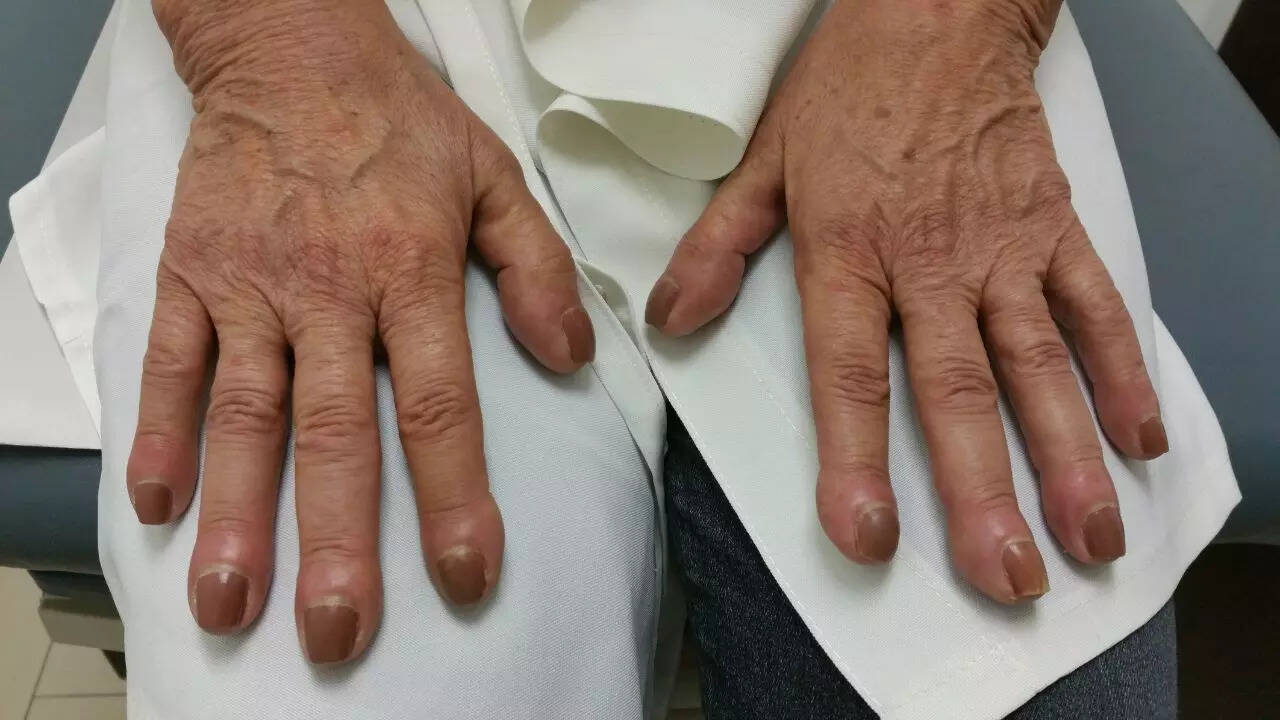Unusual nail appearance isn’t just a cosmetic concern. Nails can serve as a window into overall health. Subtle changes in nail color, shape or growth may be among one of the earliest signs of underlying medical conditions. From hormonal imbalances to nutritional deficiencies and even serious diseases that may be affecting lungs or kidneys, nails can provide several clues. Paying attention to these warning signs allows for early detection and timely intervention, potentially preventing more severe complications. Below are 6 warning signs in the nails one should never ignore.

Clubbed nailsNail clubbing refers to the enlargement and downward curvature of the nails, often accompanied by a spongy or soft feel under the nail bed. A 2017 study in Respiratory Medicine observed clubbing in patients with fibrotic interstitial lung diseases and emphasized that nail clubbing is a common, though sometimes under-recognized, clinical feature in chronic lung disease patients.Blue nailsBlue nails, medically referred to as cyanotic nails, occur when the skin or nail beds take on a bluish or purplish hue. This happens because hemoglobin in the blood is not fully saturated with oxygen, giving a bluish tint to tissues. According to the Mayo Clinic, cyanosis is a key clinical sign of hypoxemia, and persistent blue nails should prompt immediate medical evaluation, especially if accompanied by shortness of breath, fatigue, or chest pain.Brittle nailsBrittle nails, also called onychoschizia, are nails that crack, split, peel, or break easily. While occasional brittle nails can result from external factors like frequent wetting or harsh chemicals, persistent brittleness may reflect underlying nutritional or systemic issues. NIH study on the relationship between nail health and bone health, highlights that brittle nails can signal calcium deficiency. Completely white nailsA review published in the Mayo Clinic Proceedings highlights that Terry’s nails are commonly associated with liver cirrhosis, congestive heart failure, and diabetes, and can be an early clinical indicator for systemic disease. Terry’s nails are thought to result from changes in the vascular bed under the nail and alterations in connective tissue, leading to a pale appearance.White lines on nailsLeukonychia refers to the appearance of white spots or lines on the nails, often running horizontally or appearing as small dots. Zinc deficiency is one such condition that can lead to leukonychia. Zinc plays a crucial role in cell division and protein synthesis, processes vital for healthy nail growth. Studies suggest lack of adequate zinc can impair these processes, leading to abnormalities in nail appearance, including white lines.

Yellow nails Yellow nail syndrome or simple yellow discoloration of nails often reflects nail fungus. According to NHS UK, fungal nail infections are more common in toenails than fingernails. In severe cases, the nail may become so thickened and crumbly that it breaks off, and the skin around it becomes painful and swollenPersistent or noticeable changes in nails should never be ignored. While some nail changes can result from minor issues or aging, others may signal serious underlying health conditions such as lung disease, liver problems, nutritional deficiencies, or fungal infections. Early evaluation can help identify underlying health issues before they become severe. Proper diagnosis, timely intervention, and lifestyle adjustments can restore nail health and protect overall well-being.





